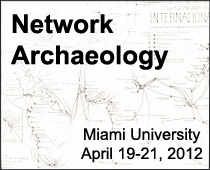Posts Tagged: computer history

Why is “Ether” in the “Ethernet”?
Presentation by Peter Schaefer (Marymount Manhattan College). This paper uses a comparative analysis of published appearances of “ether” by computer scientists in the 1970s and physicists in the 1880s. In 1973, at the Xerox Palo Alto Research Center (PARC), computer

Why is “Ether” in the “Ethernet”?
Presentation by Peter Schaefer (Marymount Manhattan College). This paper uses a comparative analysis of published appearances of “ether” by computer scientists in the 1970s and physicists in the 1880s. In 1973, at the Xerox Palo Alto Research Center (PARC), computer

Last In, First Out: Media Archaeology of/as the Stack
Presentation by Rory Solomon (The New School). Essential to any analysis of networked media is an understanding of the “stack.” This oft cited diagrammatic illustrates how protocol is operationalized within networked systems. Protocol, as Alex Galloway has written, is the

Last In, First Out: Media Archaeology of/as the Stack
Presentation by Rory Solomon (The New School). Essential to any analysis of networked media is an understanding of the “stack.” This oft cited diagrammatic illustrates how protocol is operationalized within networked systems. Protocol, as Alex Galloway has written, is the

The Surprising Light from the Cave: The Archaeology of White House Information Systems
Presentation by John Laprise (Northwestern University-Qatar). The White House is arguably the preeminent focus of political power in the United States. It lies at the center of vast array of networks and is a member of countless others. Many of

The Surprising Light from the Cave: The Archaeology of White House Information Systems
Presentation by John Laprise (Northwestern University-Qatar). The White House is arguably the preeminent focus of political power in the United States. It lies at the center of vast array of networks and is a member of countless others. Many of


